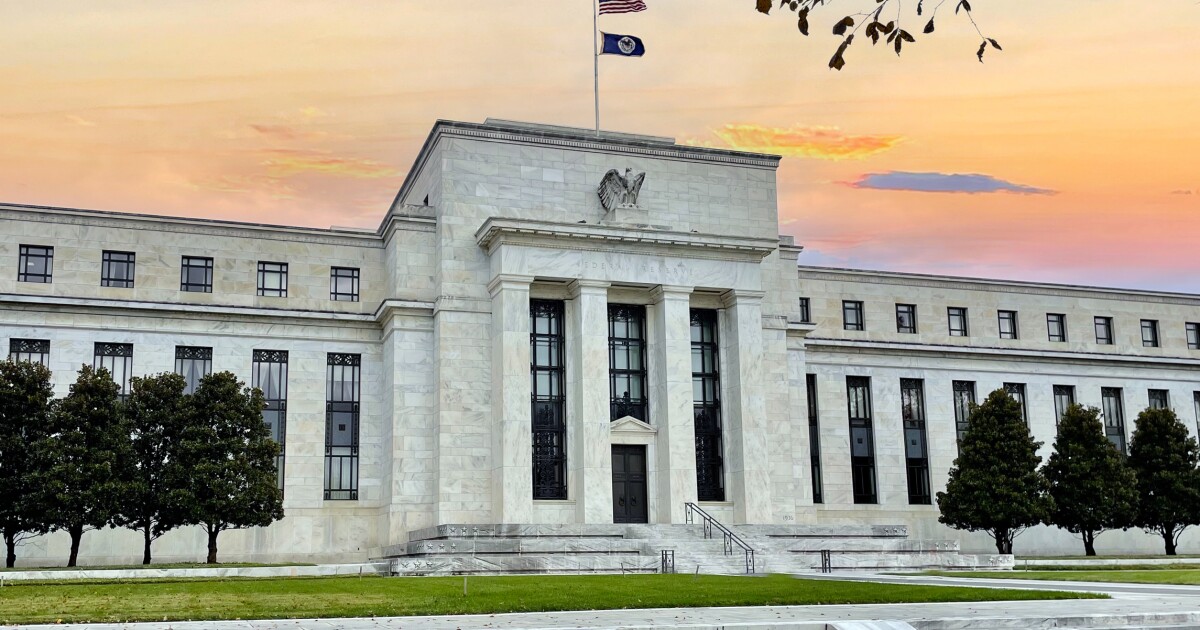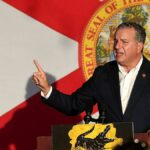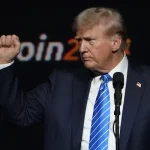

After 15 months, the Federal Reserve is hitting the brakes on its aggressive campaign to tame inflation as prices continue to relent — at least for now.
On June 14, the Fed decided to forgo another interest rate increase at its Federal Open Market Committee meeting in Washington, allowing more time for previous hikes to take full effect.
HOUSE PASSES FIRST BILL TO BLOCK FEDERAL GOVERNMENT’S GAS STOVE BAN
“The Committee seeks to achieve maximum employment and inflation at the rate of 2 percent over the longer run,” the Fed said in a statement after the meeting. “In support of these goals, the Committee decided to maintain the target range for the federal funds rate at 5 to 5-1/4 percent. Holding the target range steady at this meeting allows the Committee to assess additional information and its implications for monetary policy.”
“In addition, the Committee will continue reducing its holdings of Treasury securities and agency debt and agency mortgage-backed securities, as described in its previously announced plans,” the statement said.
The decision follows the federal government’s latest release of data showing that overall inflation continues to cool, despite remaining relatively high. The consumer price index for May rose 0.1%, the Department of Labor announced Tuesday, a drop from 0.4% in April, and increased 4% on a yearly basis.
The Fed’s pause, widely expected by financial observers, is likely to come as some relief for Americans with debt who have been faced with paying higher interest rates, as well as those looking to take on new loans, whether for a car or home. It also underscores the delicate balance policymakers have sought to strike as they attempt to tame inflation without unleashing a recession.
But the Fed signaled that its work is far from over. Core inflation, which involves volatile food and energy prices, has remained persistently high in recent months. Core inflation rose 0.4% last month, as it did in both March and April, and was up 5.3% for the 12 months through May. Prices for “shelter, used cars and trucks, motor vehicle insurance, apparel, and personal care” all increased in May, the Labor Department said.
“The Federal Reserve is getting close to the end of interest rate hikes,” said Greg McBride, chief financial analyst at Bankrate. “After the fastest pace of rate increases in 40 years, rates are high enough to have a slowing effect on the economy. There isn’t the same urgency to keep raising them at this point, but with core inflation stubbornly high it is too early for the Fed to fold up the tent and go home.”
As a result, Fed Chairman Jerome Powell warned Wednesday that the central bank is likely to approve additional rate increases this year. “Inflation has moderated somewhat since the middle of last year,” he said at a press conference after the meeting. “Nonetheless, inflation pressures continue to run high and the process of getting inflation back down to 2% has a long way to go.”
The Fed also released its most recent economic projections on Wednesday, showing that it expects the core personal consumption expenditures index, another measure of inflation that’s closely watched by the central bank, to remain higher than expected this year. In its March projections, the Fed forecast core PCE to drop to 3.6%. However, the central bank has now raised that projection to 3.9%.
“Things are still moving in the right direction and encouraging,” said Kathy Bostjancic, senior vice president and chief economist for Nationwide Mutual, per NPR. “But when we look at what we call the ‘core’ consumer price index, there is where you still see some stickiness.”
The projections also showed lower unemployment than previously expected, something the Fed and Powell himself have taken heat for in the past, as rising interest rates threatened to unleash hefty layoffs and a recession. In March, the central bank estimated unemployment would hit 4.5% this year but has since revised that figure down to 4.1%.
“There is a path to getting inflation back down to 2% without having to see the kind of sharp downturn and large losses of employment that we’ve seen in so many instances,” Powell said, according to Axios. “It’s possible that a strong labor market that gradually cools could aid that along.”
The Fed, facing swelling consumer prices, especially for food and fuel, started raising interest rates in March 2022 after keeping them low for four years. Russia’s invasion of Ukraine a month prior, as well as subsequent Western sanctions on the Russian energy sector, had helped spike prices at the pump. Meanwhile, ongoing global supply chain woes, at a time when consumer spending and demand had shot up, also contributed to soaring costs.
As prices for fuel hit record highs last spring and overall inflation surged to 9%, the Fed accelerated the pace of its rate hikes, approving a historically high increase of 0.75 basis points in June 2022, as well as three subsequent ones. Overall, the central bank raised interest rates 10 consecutive times before this month’s pause.
Since the Fed’s campaign began, interest rates for credit cards, personal loans, and mortgages have soared. Mortgage rates have at times hit 7%, skyrocketing the cost of buying a home but also cooling off an overheated real estate market where it wasn’t uncommon for bidding wars to send properties’ sale prices $100,000 above the list price. Credit card debt, meanwhile, has surged to nearly $1 trillion this year.
“With core inflation stubbornly high, we’re unlikely to see material improvement in mortgage rates even if the Fed doesn’t raise interest rates further,” McBride said. “The phrase ‘higher rates for longer’ most certainly applies to mortgage rates.”
The Fed, and Powell specifically, have faced criticism from both Republicans and Democrats for how the central bank has handled inflation. Progressives such as Sen. Elizabeth Warren (D-MA) on the Senate Banking Committee have lambasted Powell for maintaining strict economic policy, despite the risk of job losses and a recession.
“The Fed has raised interest rates eight times over the last year in what has been the most extreme rate-hike cycle in 40 years,” Warren told Powell at a hearing earlier this year before the Banking Committee. “The Fed’s goal is to slow inflation, and your tool — raising interest rates — is designed to slow the economy and throw people out of work.”
“So far, you haven’t tipped the economy into a recession, but you haven’t brought inflation under control either,” she added. She later said Powell should be removed from his position.
Republicans such as Gov. Ron DeSantis (R-FL), however, have taken aim at Powell for acting too slowly. “I think the Fed has done a horrible job over these last few years,” DeSantis, who has since announced he is running for president in 2024, said during his recent book tour. “And they really are creating potential significant turmoil in the economy going forward.”
Powell has acknowledged the economic pain consumers have felt, but says the Fed is “committed to bringing inflation back down to [its] 2% goal” to ensure long-term stability. “The Fed’s monetary policy actions are guided by our mandate to promote maximum employment and stable prices for the American people,” he said Wednesday. “My colleagues and I are acutely aware that high inflation imposes hardship as it erodes purchasing power, especially for those least able to meet the higher costs of essentials like food, housing, and transportation.
“We are highly attentive to the risks that high inflation poses to both sides of our mandate, and we are strongly committed to returning inflation to our 2% objective,” he added.
“Reducing inflation is likely to require a period of below-trend growth and some softening of labor market conditions,” he later said. “Restoring price stability is essential to set the stage for achieving maximum employment and stable prices over the longer run.”
What remains to be seen is whether the Fed will keep its foot on the brakes in the months ahead or approve further rate increases — and if so, how many. Powell said policymakers will “take into account the cumulative tightening of monetary policy, the lags with which monetary policy affects economic activity and inflation, and economic and financial developments” in making those choices.
“We will continue to make our decisions meeting by meeting, based on the totality of incoming data and their implications for the outlook for economic activity and inflation as well as the balance of risks,” Powell said.
CLICK HERE TO READ MORE FROM THE WASHINGTON EXAMINER
Bostjancic, the Nationwide Mutual economist, said the “Fed is far from calling victory on the inflation front.”
“If need be, they’ll raise rates again as soon as July,” she added.





